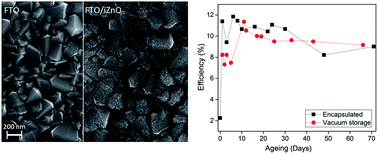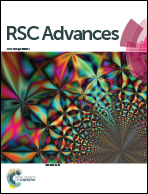Zinc oxide as a hole blocking layer for perovskite solar cells deposited in atmospheric conditions
Abstract
Zinc oxide (ZnO) is a widely used transparent conductive oxide owing to its tunable optoelectronic properties, particularly in the field of solar energy conversion. In this study a thin layer of this compound has been employed as a hole-blocking layer in a planar perovskite based solar cell in substitution for the classical titanium dioxide (TiO2) bilayer. The introduction of intrinsic ZnO between the perovskite layer and the degenerate n-type doped contact leads to a large reduction of the recombination at this interface. Optimization of the ZnO layer properties together with that of the perovskite deposition parameters leads to the measurement of a power conversion efficiency of 14.2% measured at a reverse scan on a 0.175 cm2 cell. Moreover, the ageing cell performance has been investigated over more than two months for both encapsulated and non-encapsulated devices. When a decrease of the fill factor with time, possibly related to the degradation of the cell contact, is observed, the short circuit current (>18 mA cm−2) and the open circuit (>1 V) potential remain remarkably constant.


 Please wait while we load your content...
Please wait while we load your content...